The New England Journal of Medicine published a study of adults showing that the average holiday weight gain was .37 kilograms, or just under a pound, and more than half the people in the study stayed within a kilogram, or just over two pounds, of their other weigh-ins. Now that the holidays are over, you can lose that weight and stay healthy during the long colder months. Here are five healthy habits to get started with.
 1. Do make a plan to manage your stress level.
1. Do make a plan to manage your stress level.
A good place to start is finding ways to ease stress and anxiety when they occur, or even before. That may mean doing yoga or meditation, taking a hot bath or shower, listening to music, or even just calling a friend to catch up. Just 10 minutes of stress relief can help you feel more relaxed and make it less likely that you will turn to food. If you’re having trouble finding time to unwind, mark a daily 10-minute stress break on your calendar and tag it with an alert—then treat it like you would an important appointment and don’t miss it.
2. Don’t skip meals to “save up” for a big dinner.
Some people skip meals to “save up” calories for a big dinner or party, but this approach may backfire and lead to overeating later. Instead, limit your intake to an eight-hour window of time each day. This has been shown to be an effective weight-maintenance strategy. You can even try having a lighter breakfast and lunch at your usual times, making sure they incorporate a lot of vegetables and proteins with minimal carbs. For example, you might have a cup of Greek yogurt for breakfast, a green salad with grilled chicken and light dressing for lunch, and then let yourself enjoy the evening feast.
3. Do eat your foods in a specific order.
It helps to have a plate of salad or vegetables before anything else. These low-calorie and high-fiber foods will help you fill up before you dive into the higher-calorie options. Next, have some type of lean protein. If you are going to have carbs (such as potatoes, chips, rice, pasta, bread, or a sweet dessert), save them for the end of your meal. By then, you’ll be less hungry and the protein you’ve eaten will slow your digestion a bit, so you’ll feel full for longer afterward.
4. Don’t forget that beverages count.
An easy way to cut calories is to avoid drinks like regular soda, juice, coffee drinks with added sugar, and alcoholic beverages. Also, try to aim for six to eight glasses of water per day. If you do decide to drink alcohol, choose spirits mixed with something without added sugar, such as seltzer or diet tonic water, rather than beer, wine, or mixed drinks. Or stick to a drink that has only about 100 calories per serving. Do keep in mind that alcohol can lower inhibitions and make you more likely to indulge, so limit yourself to one or two drinks, and have a glass of water after each one.
5. Do give in to your cravings (somewhat).
Controlling diet and weight is a balancing act. Completely cutting out dessert and sweets is simply unrealistic. This can lead to binging or eating more than you’d like to. If you are really craving your favorite sweet, let yourself have some. Remind yourself that this won’t be your last dessert ever and try to put the fork down after one slice—or a few bites, if you’re satisfied by that.
Check back soon for the next 5 ideas (part 2) for how to stay healthy during these colder months.
This blog was written by David Behrmann, NIFS Health Fitness Instructor. To learn more about the NIFS bloggers, click here.


 As winter approaches, don’t let it discourage you from reaching your full potential and goals you’ve set for yourself. Continue to use exercise and strength training to keep your body healthy.
As winter approaches, don’t let it discourage you from reaching your full potential and goals you’ve set for yourself. Continue to use exercise and strength training to keep your body healthy. 
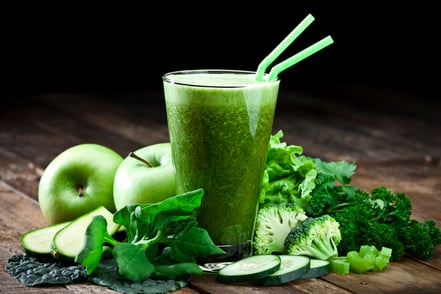 We’ve all been here before: When it seems the long, gray winter will never end and you make one more pot of hearty vegetable soup or another casserole; or when the lackluster tomatoes and almost pinkish-white strawberries just aren’t cutting it. It’s time to get creative!
We’ve all been here before: When it seems the long, gray winter will never end and you make one more pot of hearty vegetable soup or another casserole; or when the lackluster tomatoes and almost pinkish-white strawberries just aren’t cutting it. It’s time to get creative! There is no debate that it’s easier to make healthier choices and lose weight in the spring and summer months. The sun is shining and warm, the days are longer, and you feel motivated to get outdoors and be active. But when the cold, harsh months of winter come around, all motivation goes out the window. Let’s take a look at ways to keep your motivation high and get over those hurdles of temptation.
There is no debate that it’s easier to make healthier choices and lose weight in the spring and summer months. The sun is shining and warm, the days are longer, and you feel motivated to get outdoors and be active. But when the cold, harsh months of winter come around, all motivation goes out the window. Let’s take a look at ways to keep your motivation high and get over those hurdles of temptation. If you are like most people, the dreaded
If you are like most people, the dreaded 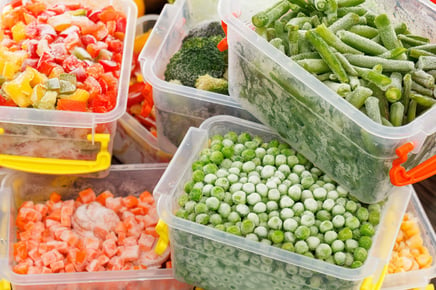 Since you were young you probably have been told to eat your fruits and vegetables. Fruits and vegetables are the nutritional powerhouses of your diet. They offer essential vitamins, minerals, fiber, and phytochemicals that not only keep your body healthy, but also protect against cancer, heart disease, stroke, and other health conditions. During the winter months, fresh fruits and vegetables are more limited and generally more expensive. As a result, many of us turn to canned or frozen options. So are canned and frozen options just as healthy as the fresh produce we consume?
Since you were young you probably have been told to eat your fruits and vegetables. Fruits and vegetables are the nutritional powerhouses of your diet. They offer essential vitamins, minerals, fiber, and phytochemicals that not only keep your body healthy, but also protect against cancer, heart disease, stroke, and other health conditions. During the winter months, fresh fruits and vegetables are more limited and generally more expensive. As a result, many of us turn to canned or frozen options. So are canned and frozen options just as healthy as the fresh produce we consume?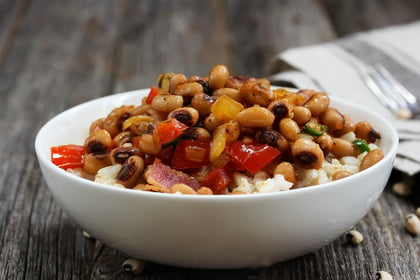 Every year on New Year’s Day my husband’s grandma makes cabbage. She says it’s good luck. I had never heard of this tradition, and then someone else told me they eat black-eyed peas for luck, also. I decided to look into it and there are actually quite a few foods that people eat every year on New Year’s Day hoping that the next year will be prosperous and lucky for them—all because of a meal they consumed on the holiday!
Every year on New Year’s Day my husband’s grandma makes cabbage. She says it’s good luck. I had never heard of this tradition, and then someone else told me they eat black-eyed peas for luck, also. I decided to look into it and there are actually quite a few foods that people eat every year on New Year’s Day hoping that the next year will be prosperous and lucky for them—all because of a meal they consumed on the holiday!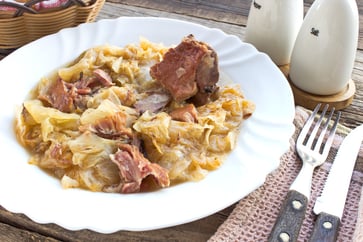 Slow Cooker Pork and Sauerkraut with Apples
Slow Cooker Pork and Sauerkraut with Apples Every four years, the
Every four years, the  The concept of cross-country skiing for sport comes from areas in which getting around is easier and more common on skis than trudging through the snow. Out of necessity and the evolution of transportation, people in the Nordic region of Europe are now famously known for producing some of the highest VO2 Max numbers in the world. Your
The concept of cross-country skiing for sport comes from areas in which getting around is easier and more common on skis than trudging through the snow. Out of necessity and the evolution of transportation, people in the Nordic region of Europe are now famously known for producing some of the highest VO2 Max numbers in the world. Your  One of the most fascinating events at the winter Olympics is the bobsled. A team of individuals, working as one, propels a bobsled down a narrow, icy chute. To get the sled going, the team relies heavily on otherworldly leg strength. The rest of the event takes skill and some luck, as this is a race to the finish line. The winning team usually has a complete balance of strength, skill, balance, and weight.
One of the most fascinating events at the winter Olympics is the bobsled. A team of individuals, working as one, propels a bobsled down a narrow, icy chute. To get the sled going, the team relies heavily on otherworldly leg strength. The rest of the event takes skill and some luck, as this is a race to the finish line. The winning team usually has a complete balance of strength, skill, balance, and weight.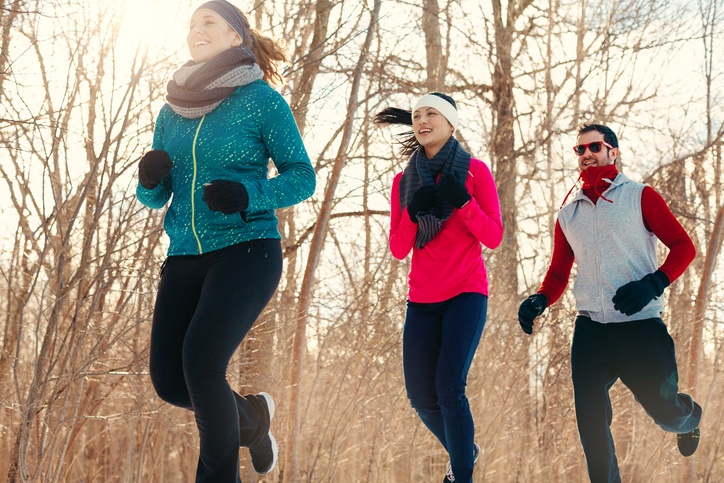 Winter is officialy here. With temperatures getting colder and the weather conditions more temperamental, it’s important to plan ahead to stay on top of your wellness goals. Distractions are inevitable during the holidays, but anticipating them and reacting accordingly will set you apart from most individuals during this season. See our tips below to help combat being sidelined this season
Winter is officialy here. With temperatures getting colder and the weather conditions more temperamental, it’s important to plan ahead to stay on top of your wellness goals. Distractions are inevitable during the holidays, but anticipating them and reacting accordingly will set you apart from most individuals during this season. See our tips below to help combat being sidelined this season For years fitness enthusiasts have used the colder months of the year as an opportunity to put on muscle mass (or
For years fitness enthusiasts have used the colder months of the year as an opportunity to put on muscle mass (or  So which type of hypertrophy should you go for? That depends on what your personal goal is. Ask yourself these three quick questions before you approach method 1 or method 2:
So which type of hypertrophy should you go for? That depends on what your personal goal is. Ask yourself these three quick questions before you approach method 1 or method 2: